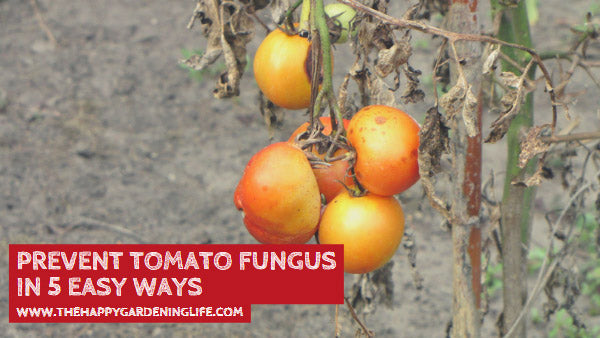
Prevent Tomato Fungus in 5 Easy Ways
Share
 Tomatoes can almost certainly be found in any vegetable garden. They’re very popular because they’re not only delicious, but also super easy to grow and maintain.
Tomatoes can almost certainly be found in any vegetable garden. They’re very popular because they’re not only delicious, but also super easy to grow and maintain.
But while growing tomatoes is relatively easy, you might encounter some problems and plant diseases along the way. Tomato fungus is one of the top diseases that you should avoid at all costs.
Tomato fungus is a common illness that affects many tomato plants. It’s highly dangerous as it can spread and infect your precious tomatoes very quickly.
The usual symptoms can clearly be observed on the leaves. If the leaves are shrinking, decaying, turning yellow, forming black spots, or getting white mold, then they have unfortunately been infected.
To keep this fungal disease from destroying your garden, you should apply some precautionary measures. Here are some practical steps you can do to prevent and control tomato fungus effectively. Follow these quick tips now and be sure to share it with your gardening friends online!
How to Prevent Tomato Fungus in 5 Easy Ways
1. It is important that you don’t compost dead leaves or plants. Any fungus affected leaves, vines and fruit should be thrown away in the fall.
2. If diseased leaves or fruit fall from your tomato plant, you should gather these up and dispose of them as soon as possible. If you do not, the fungus spores may lie dormant in the soil over the winter.
3. To aid ventilation, you should trim the bottom 25% of your tomato plant of all vines and leaves. This will increase airflow and decrease humidity around the base of the plant and in the soil.
4. Avoid high nitrogen fertilizers. High-nitrogen nutrients in your fertilizer can encourage leaf fungus in tomatoes. Nitrogen causes the plant to develop many leaves. This thick foliage reduces air circulation. Tomatoes prefer high phosphorus and calcium fertilizers.
5. Staking (growing on tomato cages/frames) is key to controlling early blight and southern blight, since it keeps the foliage and fruit away from the soil. Having your plant trailing on the ground is just asking for blight, as the blight fungi are usually present in soil.
Article Source: organic-vegetable-garden-guide.com
Image Source: scotnelson
